Lesson 3
1. Lesson 3
1.6. Explore 2
Module 5: Geometry
In Try This 2, you may have found that the triangles created inside a regular pentagon are identical and are isosceles triangles. Using your knowledge of isosceles triangles, you would have determined the measure of each interior angle of the regular pentagon. To see how the interior angle of a regular polygon can be determined, view Interior Angles of a Regular Polygon. Select the Play button for each step to continue.
As you saw in Interior Angles of a Regular Polygon, the measure of each interior angle and the sum of the interior angles of a regular polygon can be determined using the formulas given here.
For an n-sided regular polygon, the following are true:
![]()
In the next Try This, you will use these formulas to determine the measure of each interior angle and the sum of the interior angles for regular polygons.
Try This 3
- Complete a table like the one shown.
Regular Polygon Name Number of Sides, n Measure of Each Interior Angle 
Sum of Interior Angles

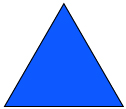
equilateral triangle 3 
square 4 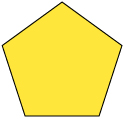
pentagon 5 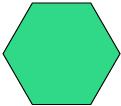
hexagon 6 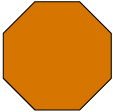
octagon 8 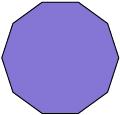
decagon 10 - What happens to the measure of each interior angle as the number of sides increases?
- Create a graph with the data from your table. Graph the number of sides, n, on the x-axis and the sum of interior angles, S, on the y-axis.
- What happens to the sum of the angles as the number of sides increases?
![]() Save your responses in your course folder.
Save your responses in your course folder.
